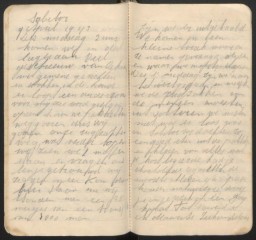
Artifact
Browse an alphabetical list of artifacts from the Holocaust and World War II. Each object tells a story about the history and demonstrates human experiences during the time period.
<< Previous | Displaying results 181-190 of 231 for "Artifact" | Next >>
-
Romani (Gypsy) musician's violin used in a prewar musical band
ArtifactViolin owned by Rita Prigmore and originally used by her father, who played with his four brothers in a band in Germany before World War II. Rita and her family were members of the Sinti group of Roma (Gypsies). She and her twin sister Rolanda were born in 1943. Rolanda died as a result of medical experiments on twins in the clinic where they were born. Rita and her mother survived the war and moved to the United States, before returning to Germany to run a Sinti human rights organization that sought to…
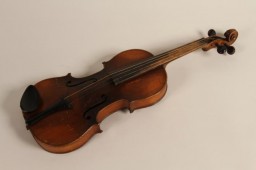
-
Romani (Gypsy) woman's skirt
ArtifactThis taffeta and cotton skirt dates from the 1920s. It belonged to a Romani (Gypsy) woman who was born in Frankfurt, Germany, and who lived in Germany before the war. She was arrested by the Nazis and interned in the Auschwitz, Ravensbrück, Mauthausen, and Bergen-Belsen camps. She died in Bergen-Belsen in March 1945, shortly before the camp's liberation. Her husband and two of her six children were also killed in the camps.
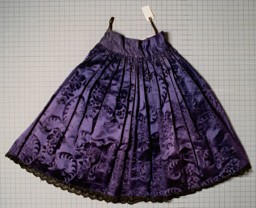
-

-
Rosh Hashanah card
ArtifactSorle and Shalomis Gorfinkel presented this card to their parents on the occasion of Rosh Hashanah 5704, the Jewish New Year 1943. The Gorfinkel family was part of the Mir Yeshiva community in Shanghai.

-
Rosh Hashanah card
ArtifactA Rosh Hashanah (Jewish New Year) greeting card. Sorle and Shalomis Gorfinkel presented this card to their parents on the occasion of Rosh Hashanah 5704, the Jewish New Year 1943. The Gorfinkel family was part of the Mir Yeshiva community in Shanghai.
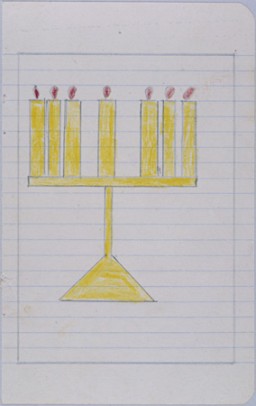
-
Sandals
ArtifactWooden sandals worn by a member of the Mir Yeshiva in Shanghai. [From the USHMM special exhibition Flight and Rescue.]
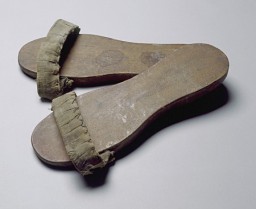
-
Scales used by refugees
ArtifactScale used by refugees Masza Swislocki and George Lieberfreund to weigh jars of artificial honey, which they manufactured and sold in the restricted area of Shanghai. [From the USHMM special exhibition Flight and Rescue.]
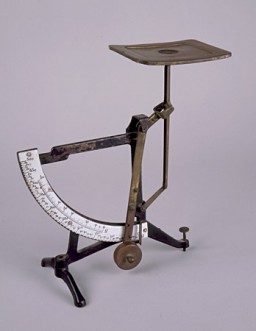
-
Scrapbook
ArtifactMany observers at the IMT, aware of the historic nature of the trial, created scrapbooks to preserve their own record of the Nuremberg court. First Lieutenant Herman E. Klappert, Jr. was a photographer with the U.S. Army Signal Corps who assembled three such scrapbooks. Klappert's albums consist almost entirely of photographs that he printed himself. Also included in the albums are original autographs from the defendants and other principal figures at the trial, official identification cards issued to…
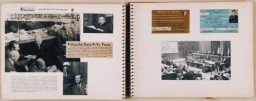
-
Scrapbook
ArtifactMany observers at the International Military Tribunal (IMT) at Nuremberg, aware of the historic nature of the trial, created scrapbooks to preserve their own record of the Nuremberg court. First Lieutenant Herman E. Klappert, Jr. was a photographer with the U.S. Army Signal Corps who assembled three such scrapbooks. Klappert's albums consist almost entirely of photographs that he printed himself. Also included in the albums are original autographs from the defendants and other principal figures at the…

-
Selma Engel diary entry about arrival in Sobibor
ArtifactDiaries reveal some of the most intimate, heart-wrenching accounts of the Holocaust. They record in real time the feelings of loss, fear, and, sometimes, hope of those facing extraordinary peril. Selma Wijnberg and Chaim Engel met and fell in love in the Sobibor killing center. After the young couple made a daring escape during the camp uprising and fled into hiding, Selma began a diary to record their experiences. The diary was written in 1943-1944 while Selma was in hiding in German-occupied Poland.…
